Stockholm: Saturday
This is the third post in a multi-part series about our trip to Stockholm in fall 2023. All entries here.
Up early for another run. I wind through suburban Södermalm and up to the north shore of the island, the Söder Mälarstrand. Boats are tied up along the paved promenade—medium-size things from the sixties or seventies that have all been converted into floating hotels or restaurants or, usually, both. I pass a few runners going in the other direction; they're steely-eyed and move with intimidating speed and power. I briefly entertain an image of them barrelling into me and hurtling me body & soul into the river.
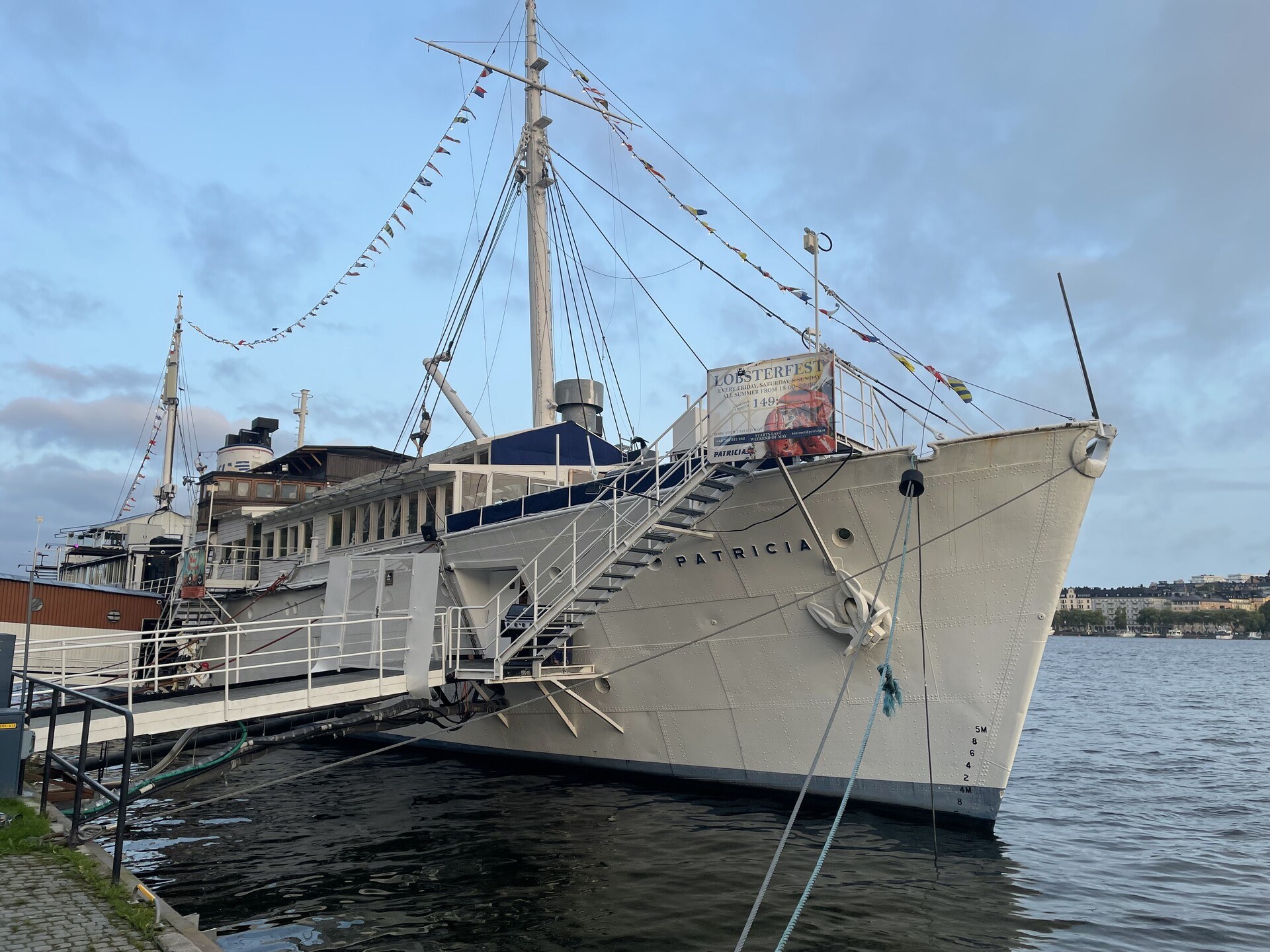
The water here, strictly speaking, isn't a river, though it flows from inland to the Baltic Sea, west to east. This water—I don't think to check whether it's salty—is actually the easternmost bay of Mälaren, a many-islanded lake stretching from Stockholm westward into the great forest expanses of Sweden. Many hundreds of years ago, in the days of the Vikings, Mälaren was apparently a bay of the Baltic Sea, but post-glacial rebound caused the bed of the lake to rise so much that it was cut off from seagoing trade—prompting the Swedes of yore to found Stockholm on the spot that the lake meets the sea. Neato!
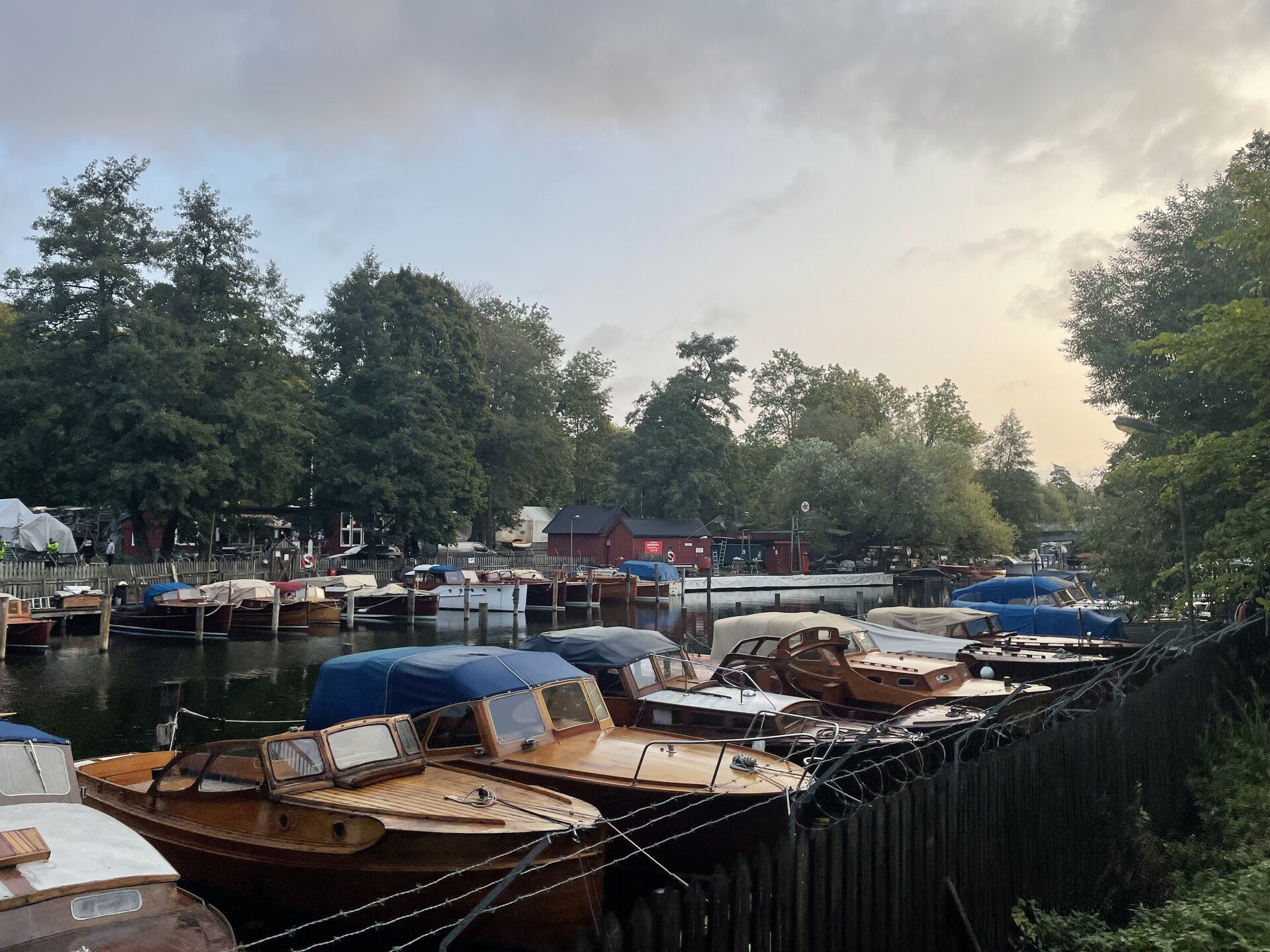
Anyway, I round the western tip of Södermalm and make my way down the south shore of the island, past more marinas and a cramped, deserted beach, under bridges and through parks where early-risers are walking their dogs. I'm utterly struck by the quiet, here in the not-quite-suburbs of one of Europe's great cities. Okay, it's 8 am on a Saturday morning, but where's all the noise?
I shower and get breakfast with Sam and then we head right back out. We've booked a day out at Birka, the oldest town in Sweden and an important trading centre for Viking culture. The site is abandoned now—a farm now sits where the town stood—but its thousands of burial tumuli remain to attract curious tourists from the north east of England. We board the boat that will take us to Birka, some thirty kilometres west, across Mälaren, and sit down next to a pair of Australians wrapping up a tour of Europe in celebration of their fortieth wedding anniversary. They make for wonderful company while we ogle the countryhouses lining the craggy, forested shores of the lake.
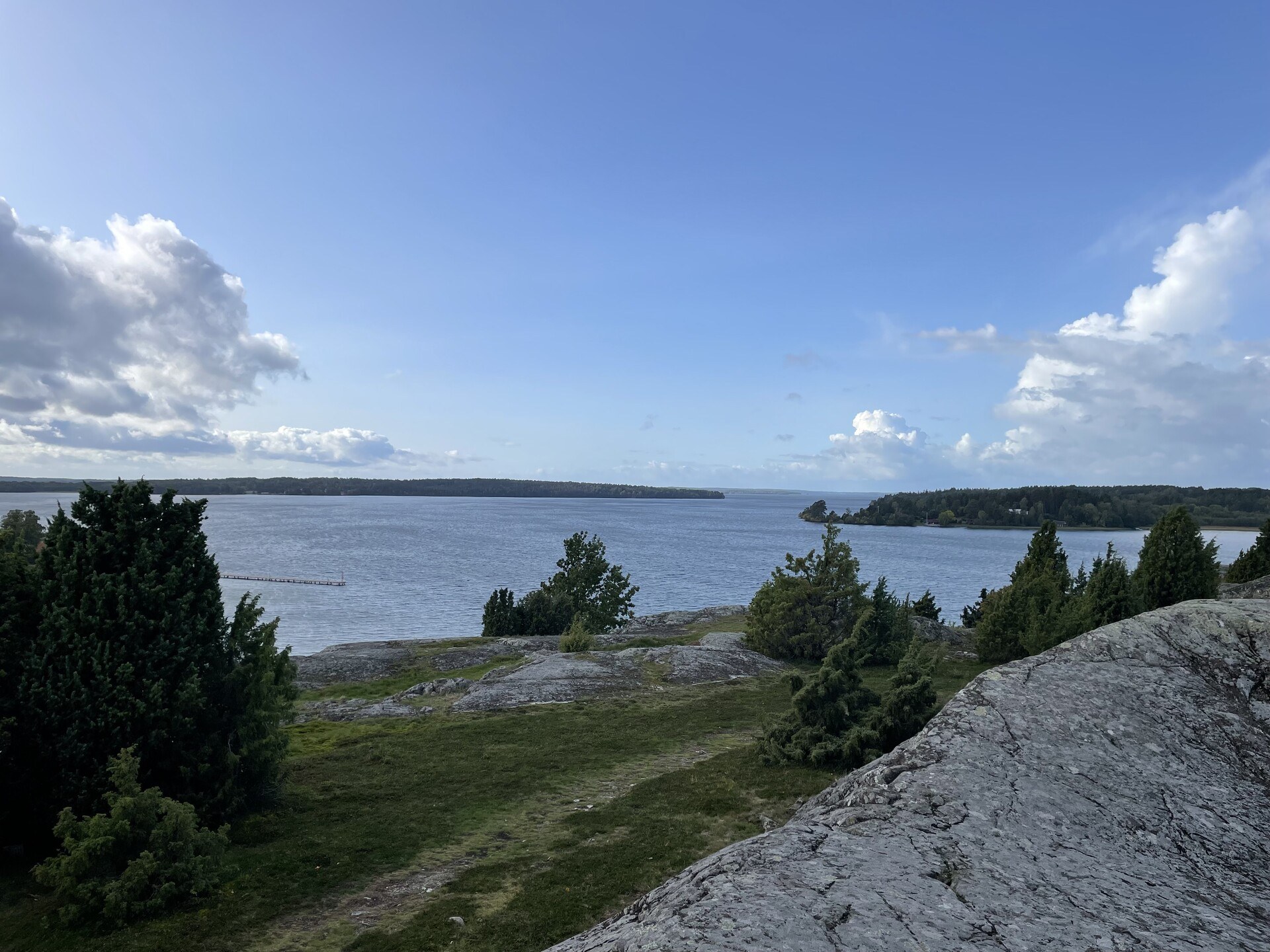
At Birka, the wind has picked up, blowing yellow birch leaves all over the place. The air is early-autumn cool. We're herded into a little museum-slash-gift-shop while we wait for the guide to get prepared. We'd spotted him on the boat in Viking period get-up: a linen jerkin, wool trousers, and New Balance sneakers. When he emerges from the museum backrooms to guide the tour of the burial mounds on the hill, he's got a green wool cloak wrapped tightly around him as well. "This might look cool, but it's very itchy," he tells us. "I'm an archeologist, not a reenactment actor, and I don't like wearing these clothes." He's also holding a small stick with a leather pouch attached to it by a bit of string; he uses this stick and pouch to gesture to things but never explains what it is. It doesn't occur to me to ask.

We follow the guide up a little track and then cast off up a hillside. Above us are a handful of big tumuli, which is a fancy word for a lump on the ground with a body inside. We've got them in the UK as well, but not so many, with such regularity, as here. He tells us that the water level used to be a lot higher—because of that post-glacial rebound!—and that where were standing used to be the old shoreline of the lake. The tumuli above us were constructed over a span of two hundred years or so, more than a thousand years previous; since Vikings didn't keep written records, the only contemporary accounts of the tumuli, or of Birka at all, were written by foreigners. We follow the guide up the slope and stand amid the mounds. There's a standing stone between them, erected around the same time. It's hard not to imagine the hands that lifted the stone and put it here.
Smooth, undulating bedrock emerges from the turf at the top of the hill, where a hillfort once stood. The ramparts on the flanks of the hill are clearly visible. Some of our tour group break off and wander along them, hopping across the stones scattered about. The tour guide is gesturing across a broad field in the basin on the far side of the hill, saying, "That farm is probably the most evil farm in all of Sweden." He explains that the uncurious ancestors of the current farmers ploughed up whatever remained of Birka after it was abandoned just before the end of the first millennium; all that we know about the location and size of the town has been discovered through LIDAR scans of the terrain. He's right: there's not much to see in the field. In the trees beyond, more tumuli stretch off into a mixed forest. I'm sorry that we can't see the old settlement but the vista is nice to look at anyway.
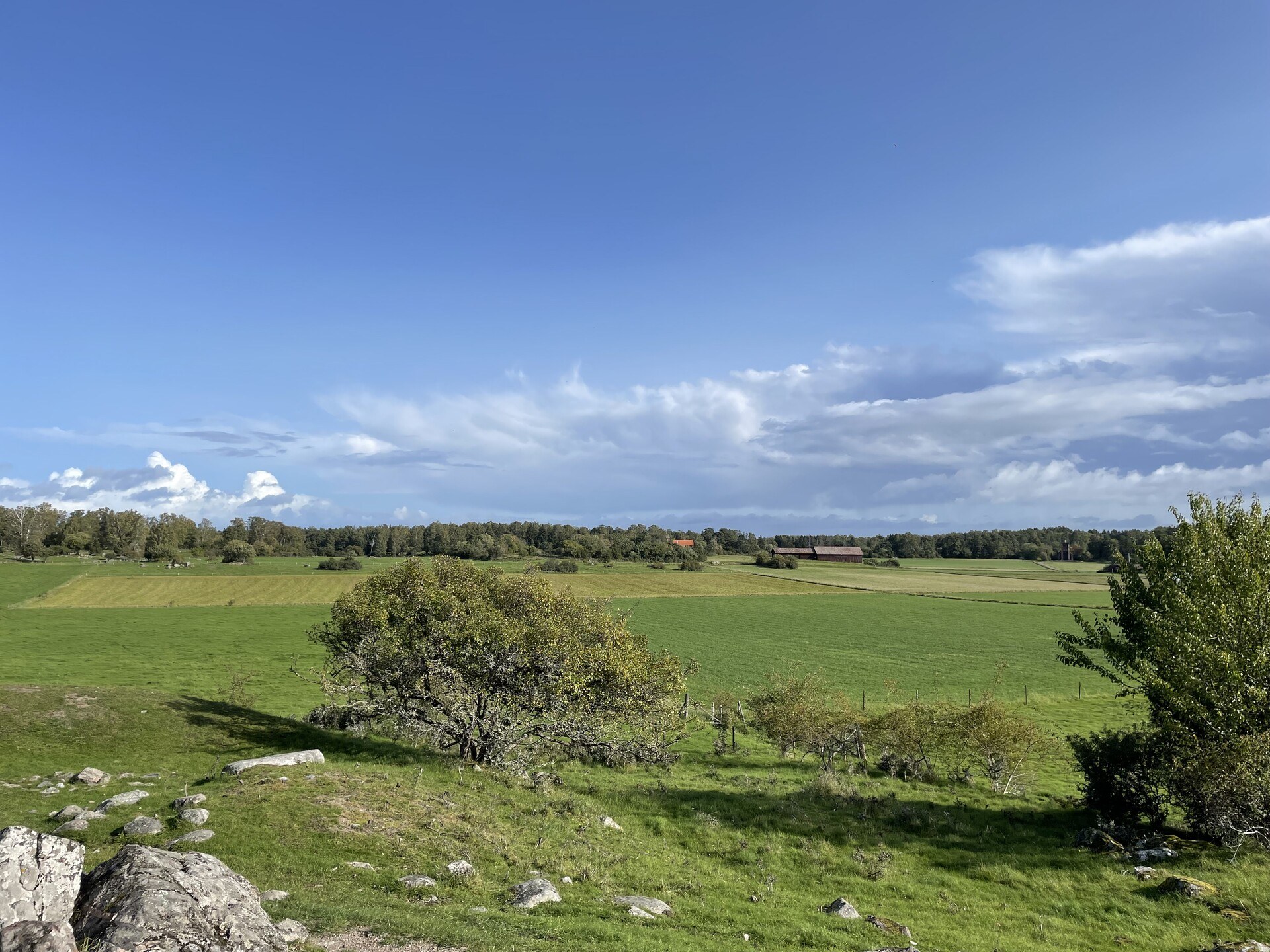
The tour ends sort of abruptly and us tourists scatter. Sam and I cast off across the field. I want to see what the forest is like. It's a bit sparse, and there's a remarkable amount of deadfall just sort of lying around, but otherwise it's just a regular old forest full of massive Viking burial mounds. We take the long way back to the museum, meandering through the evil farm and a couple of cottages. The island is small enough that there are no cars here—only quad bikes and a couple of tricycle contraptions, like a motorised cargo bike with two wheels out front.
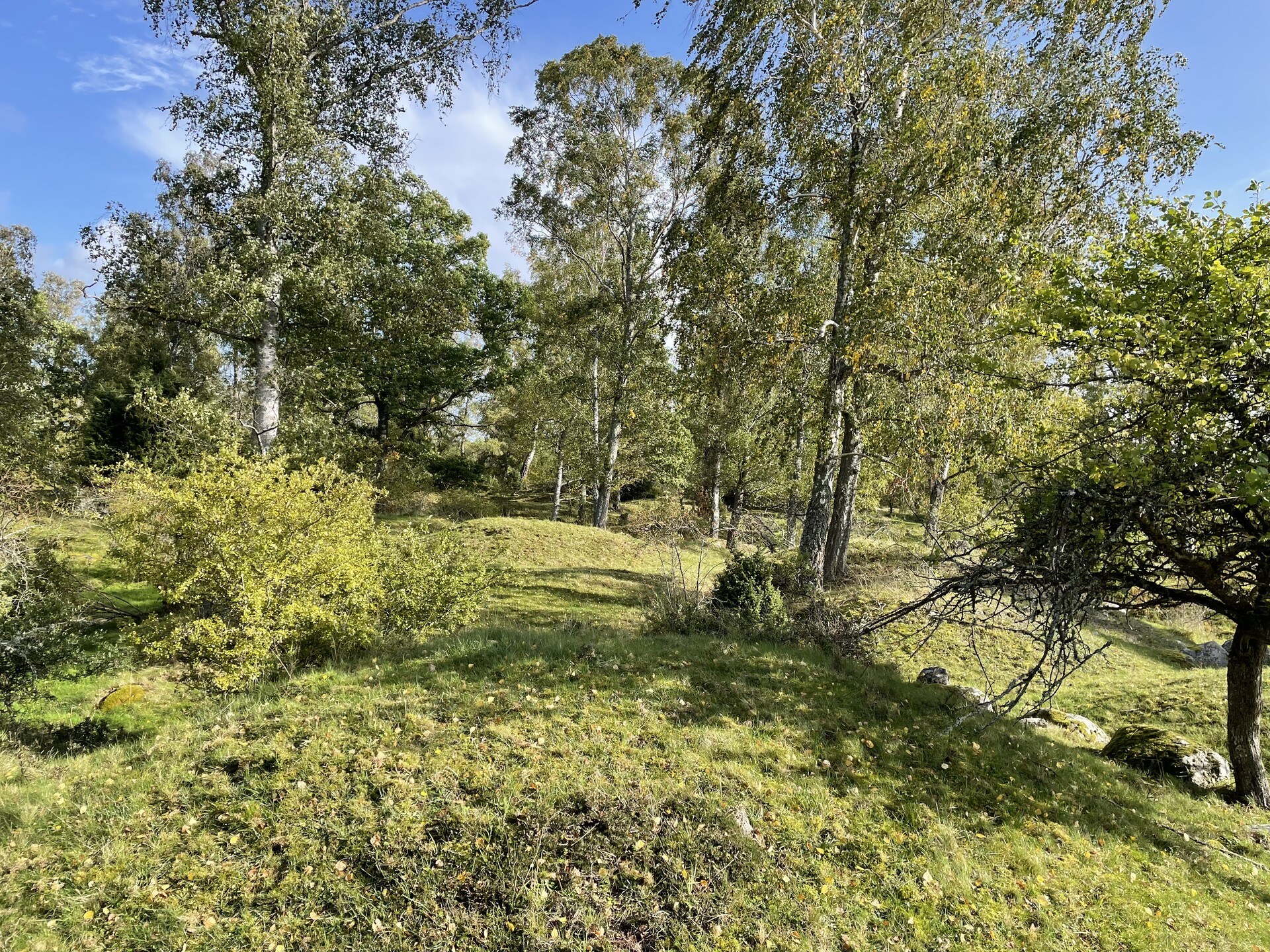
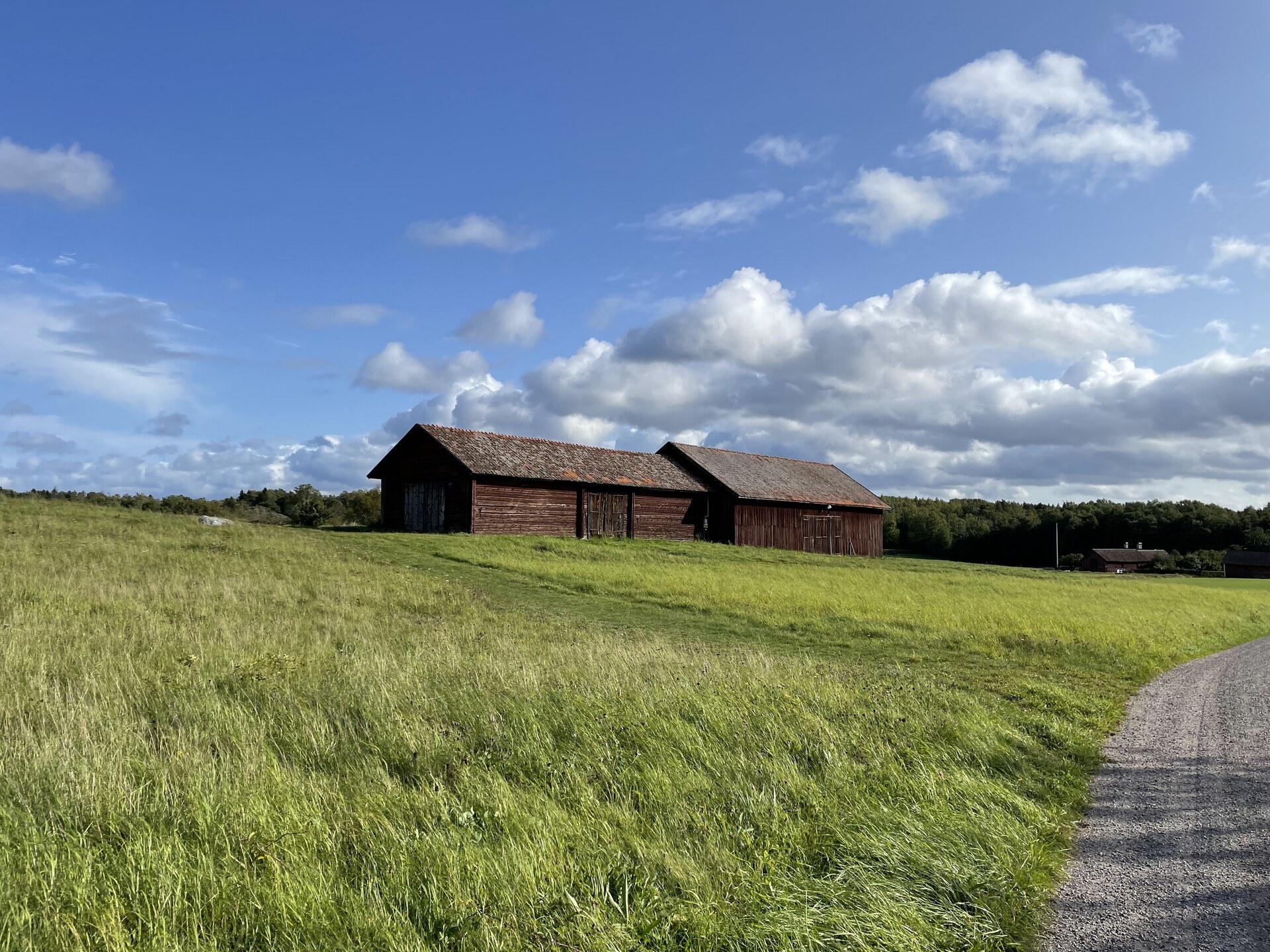
The museum is alright. The gift shop is oriented towards a) families with kids who are into Vikings, and b) adults who would buy a welded-steel coat rack in the shape of a Younger Futhark rune. The exhibit tends towards the larp-ish, though there are a couple of extremely detailed miniature town dioramas that I could spend hours looking at.
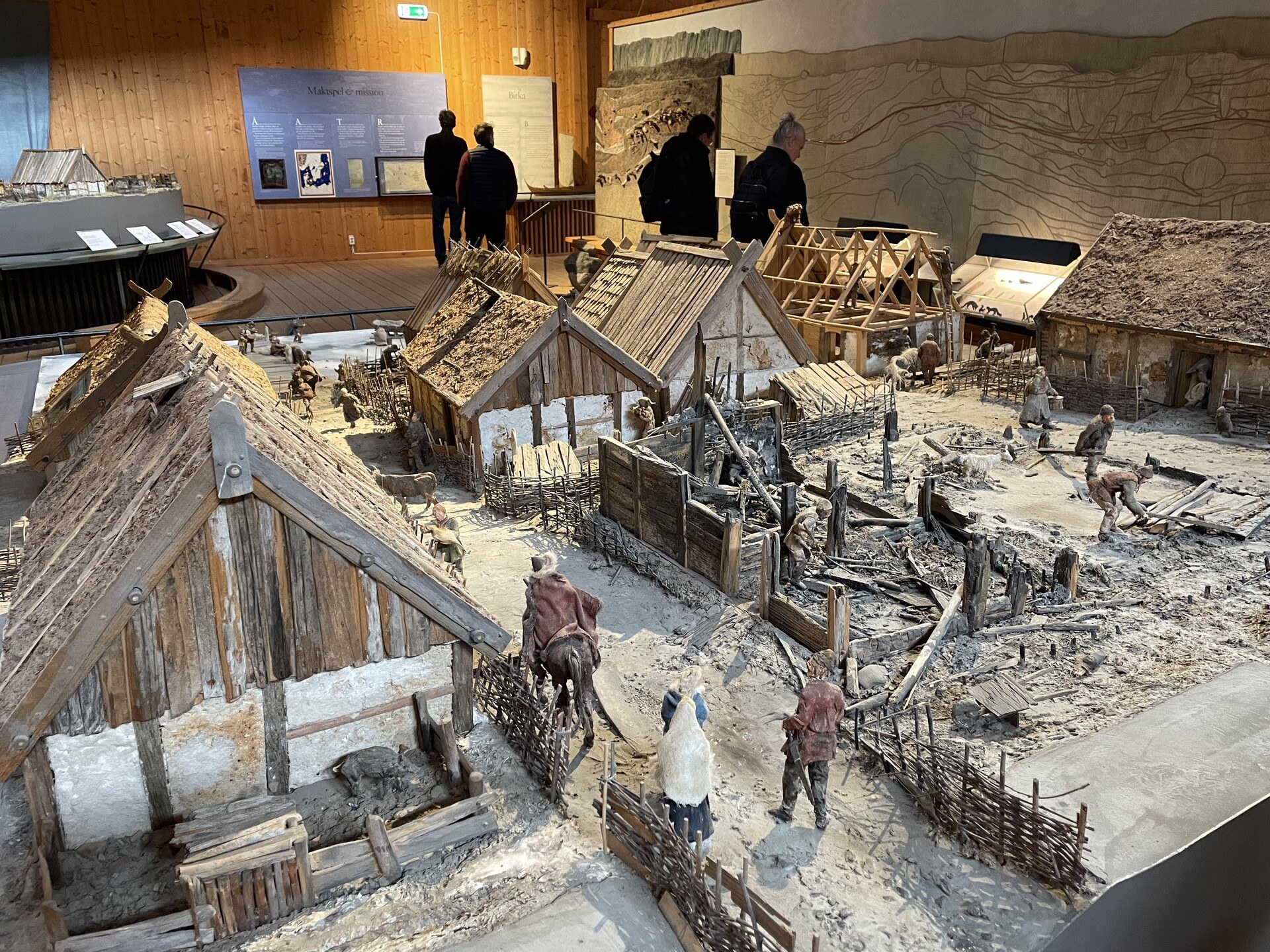
Our feet are starting to get tired by this point, though, so we meander over to the cafeteria—sorry, beer hall—for coffees in tiny handmade cups. Luckily refills are free. After a few cups, I decide to graduate to something more ambitious, and order a bottle of liquorice stout, much to the confusion of the lady behind the counter, who seems hesitant to sell it to me without informing me what I'm getting into. It's pretty good—but more importantly, it psychosomatically shortens the 2.5-hour boat ride back to Stockholm.
We don't have plans for dinner, so we just wander around Södermalm until something catches our eye. Thai food carries the day in the end, though the chopsticks provided are not up to handling up the sauce-heavy rice bowls we order. Sam scopes out a "Whippet Lab" on Google Maps and the promise of hanging out with dogs proves too strong to resist. When we arrive we find a couple of hipsters drinking cloudy IPAs, but no dogs. We order a flight anyway, and rank the beers as we go. They don't hold a candle to the stout from Birka. As we stand up to go, a whippet materialises beside our table. We give her lots of attention, but as we've had literally every single style of beer they serve in the joint, we make our move. We follow the sound of guitar music down the street and enter a bar where a metal band is playing at what seems to Sam and I to be an extremely respectable volume. At the bar directly adjacent to the stage I order a couple beers and only have to yell a little. Everyone in the bar is wearing black, but no one is dancing, and certainly no one is moshing.
We dip during an interlude and grab a hotdog—a grillad korv to the locals—from a street vendor. They put just enough mustard on it, which is to say, more mustard than any British person would think to put on anything, ever. This is, second only to kanelbullar, my favourite part of Swedish culture so far. I get mustard in my beard and my sleeve comes away yellow.
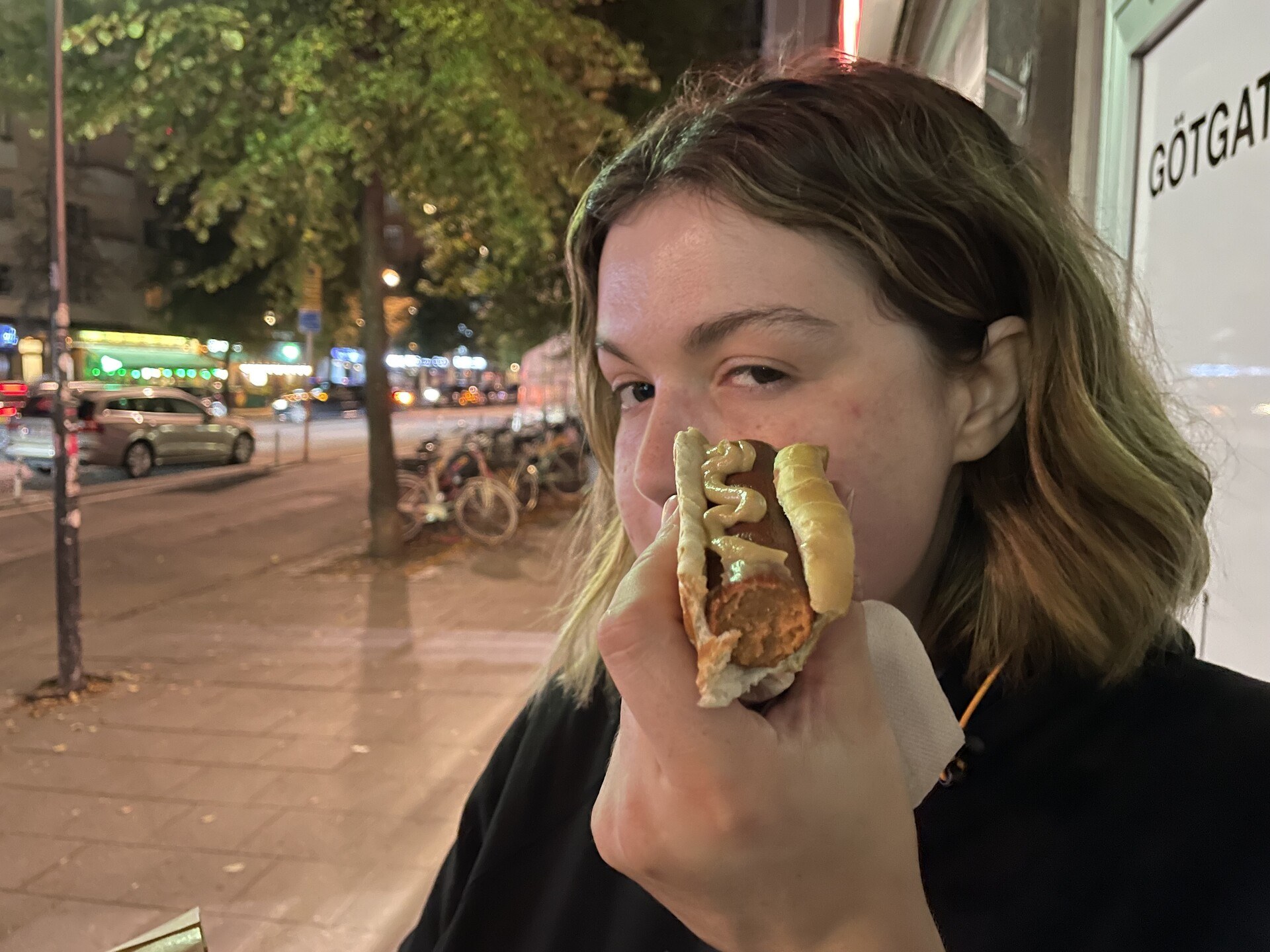
The night is clearly winding down, but my bloodthirst for grillade korvar is unquenched. I duck into a 7-Eleven for another—and a kanelbulle for dessert, why not? When I step up to the glass with a cheery, "Hello!" to indicate that I'm a foreigner, the man on the other side counters with a smooth, "What'll it be, maestro?" I just about collapse. He tries to upsell me on a second kanelbulle for half off, which I decline; he gives me the second one for free anyway.
I have never met anyone cooler than this 7-Eleven man, and I likely never will again. I will carry this moment with me to the end of my days.
We go home and watch approximately the first 25 minutes of Indiana Jones and the Last Crusade.
Next
Going to a building with a big ship inside, coffee and kanelbulle in the fancy part of town, a disappointing pick'n'mix, being mistaken for locals at a kebab place.
Previous
Visiting Skansen, doing a fika, having a life-changing experience with a cinnamon roll, going for a run, reindeer for dinner.